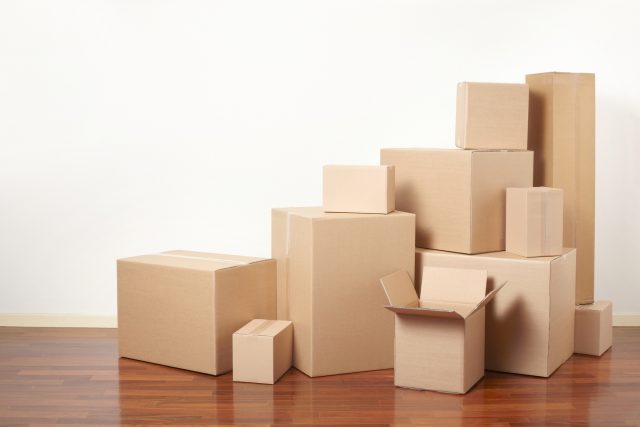Boxes, tape and bubble wrap, oh my! If you have a move on the horizon or have experienced one in the recent past, you understand well that the act of moving doesn’t lend itself to eco-friendly living at first blush. So much packaging can make the least green of us shudder. Rest assured, you can remain environmentally conscious and stay committed to controlling the waste during your move, while also keeping your transport emissions down. Just follow these simple tips:
Box smart. According to Move.com, the average move uses about 60 boxes (see infographic below). That adds up to a whole lot of trees over time. Keep usage down by getting the word out about your move as early as you can. If you know folks who are making a move before yours, ask them to save all their packaging, including bubble wrap and protective packing paper, so you can reuse it during your own move.
Choose box alternatives. Before you buy new boxes for your move, make sure you’ve exhausted all possible resources for box alternatives. Pack in empty large plastic bins you own, borrow from friends or ask your mover if they supply or rent reusable bins. Not only is this a great green option, it takes some of the work off your plate as movers drop bins off ahead of time and take them away after the move. No need to break down boxes or recycle them, you can move on to decorating your new home.
Fuel emissions. The size and distance of your move makes all the difference when it comes to emission of CO2. When interviewing moving companies, be on the lookout for green options such as these:
- Fuel type—ask each company what type of fuel they use. Many organizations have converted trucks to biodiesel fuel, an upgrade that helps reduce your move’s carbon footprint.
- Car shipping—if you’re moving an automobile, price out both truck and rail shipping options. Train transport can represent huge savings to you and lighten the moving truck’s load on the road.
- Clean out before you move—whatever you can do to reduce the number of goods you plan to move will make a big impact on related emissions. Don’t pack mindlessly and hurriedly, instead, think about items you can donate before making your move.
Get things clean. Make sure you leave your old space clean and healthy for the next inhabitants. Use eco-friendly cleaning products for floors, countertops, and windows or hire an eco-friendly cleaning company—like us!—to come in and take care of dirt, dust, and debris. Grab this great online checklist from our friends at MakeSpace for all your pre- and post-cleaning tasks.
Talk to us: Have you made an environmentally conscious move in recent months? Share what you learned and your best tips for other readers below.

